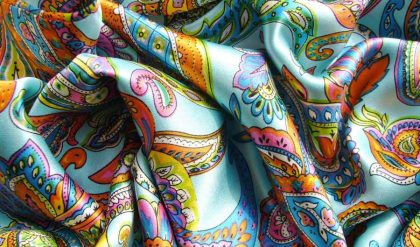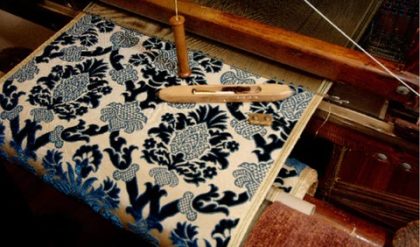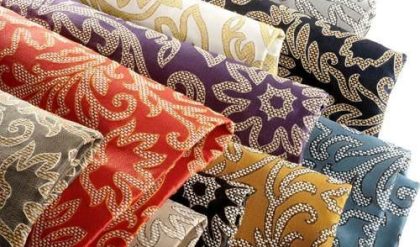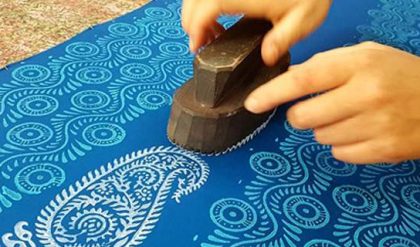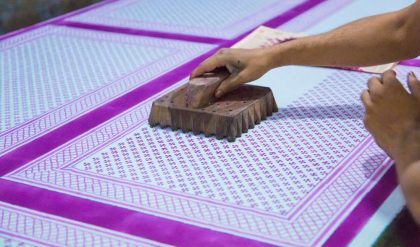The term ‘architectural fabrics’ generally refers to structural fabrics used to form tensile surfaces, such as canopies, roofs and other forms of shelter. Architectural fabrics are generally held in position by tension forces imposed by a structural framework, a cabling system, internal air pressure or a combination.
Typically, the membrane is formed by a fabric, consisting of a woven base cloth, coated on both sides with an impermeable polymer, and sometimes a durable topcoat, however a wide range of variations are available, ranging from open weave fabrics, to transparent foils.
Architectural fabrics are generally very thin, approximately 1mm thick and have very little compressive strength, but very high tensile strength.
The typical tensile strengths of architectural fabrics are set out below:
· Type 1: 3,000 N/5cm.
· Type 2: 4,000 N/5cm.
· Type 3: 5,550 N/5cm.
· Type 4: 7,000 N/5cm.
· Type 5: 9,000 N/5cm.
Cotton
Cotton was one of the earliest materials used as an architectural fabric, and is still in use today. It is relatively inexpensive and is available in a wide range of colours, but it has a lower tensile strength than some more modern materials, and is prone to staining and shrinkage. It has a relatively short life expectancy, but can flex repeatedly without cracking, and so tends to be used for small-scale, temporary structures.
PVC polyester
PVC coated polyester is the most commonly used architectural fabric. It is relatively inexpensive, has reasonable structural strength and translucency, can be joined relatively easily at seams by welding, and has an reasonable life expectancy.
Structurally, PVC polyester can last in excess of 20 years, however, it becomes more difficult to clean as the plasticisers used to make the PVC flexible leach to the surface, and so it is generally expected to last 10 to 15 years.
It is often manufactured with a topcoat such as PVDF (polyvinylidene fluoride), which improves its cleanability, but generally reduces its weldability, and so must be removed in the region of welded seams. Topcoats can increase the lifespan of PVC polyester to 15 to 20 years.
NB: PVC has been criticised for its environmental performance, with claims that the chemicals used to plasticise the PVC can be harmful to the environment. However, alternatives such as polyolefin coated polyester have struggled with fire resistance issues, and fire retardants added to the coating have resulted in reduced adhesion at seams.
PVC nylon
The less common PVC nylon is similar to, but has a higher elasticity than PVC polyester, and so has been used for the fabrication of air-supported and air-inflated structures.
PTFE glass
PTFE (polytetrafluoroethylene or ‘Teflon’) coated glass can be stronger than PVC polyester, and is longer lasting, with a life in excess of 30 years. However, it is more expensive and is relatively inelastic, and so requires more accurate patterning.
PTFE is a cream colour when new, but bleaches white in sunlight and is generally self cleaning if regularly exposed to sunlight.
Silicone glass
Whereas PTFE is translucent, silicone is transparent, and silicone coated glass has an anticipated life of up to 50 years. It has good fire resistance and low toxicity, but is not weldable, and so the seaming process requires an adhesive, and silicone can be difficult to keep clean.
EFTE foil
Ethylene tetrafluoroethylene (ETFE) is a relatively transparent foil that can be used as a lightweight alternative to glass. It can be used as a single layer, or in multiple layers of up to 5 layers, inflated to form large cushions.
